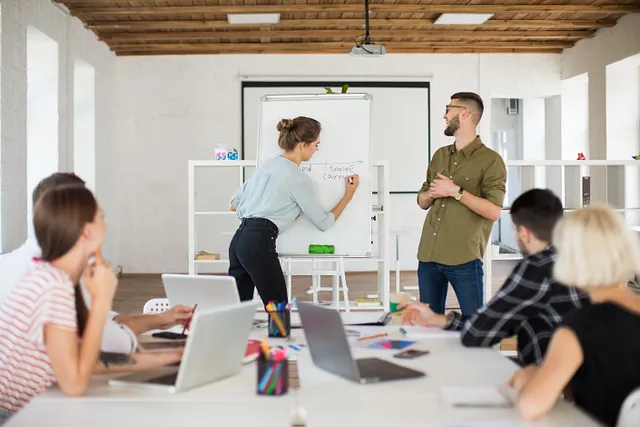
In today's rapidly evolving landscape/environment/realm, educators are faced with the challenge/opportunity/imperative of engaging/motivating/inspiring students in a digital/technologically advanced/virtual world. This interactive/immersive/collaborative workshop, titled "Empowering Learners in the Digital Age: A Workshop on Innovative Teaching Strategies", aims to provide teachers with practical/actionable/effective strategies and tools/resources/techniques to cultivate/foster/nurture student engagement/participation/active learning in the digital age.
- Participants/Attendees/Learners will explore a variety of innovative/creative/cutting-edge pedagogical approaches/methods/strategies that leverage technology to enhance/improve/augment the learning experience.
- Sessions/Activities/Workshops will focus on practical/hands-on/experiential applications of technology/digital tools/learning platforms in the classroom.
- Participants/Teachers/Educators will have the opportunity to network/collaborate/share best practices with colleagues and experts/leaders/professionals in the field.
{By/Through/Upon completion of this workshop, participants will be able to/gain/develop/acquire a deeper understanding of how to effectively integrate/implement/incorporate technology into their teaching practice. They will also leave with actionable/practical/useful strategies that they can immediately apply in their classrooms to enhance/improve/transform student learning and engagement/motivation/achievement.
Developing a growth mindset is crucial for both teachers and students to achieve academic success and personal development. When educators embrace this philosophy, they inspire their students to view mistakes as opportunities for learning and setbacks as temporary hurdles. This encouragement creates a classroom environment where risk-taking is welcomed, leading to greater academic growth.
Furthermore, teachers who cultivate a growth mindset model a lifelong love of learning, constantly exploring new knowledge and techniques. They understand that their own expertise is continuously evolving and are willing to consider their teaching practices. This dedication to professional development not only benefits the teacher but also deeply impacts the learning experiences of their students.
- By fostering a growth mindset, teachers create a supportive and collaborative learning environment where all students feel confident to engage
- In essence, cultivating a growth mindset is essential for both teachers and students to unlock their full potential and thrive in their academic pursuits.
Meeting Diverse Learning Needs
Effective educators recognize that students learn in unique ways. {Therefore|Consequently, differentiated instruction emerges as a critical pedagogical approach to accommodate these individualities. By tailoring learning experiences, teachers can facilitate that all students have the ability to thrive. Differentiated instruction can take teachers training workshop topics many {forms|manifestations, including adjusting the content, process, product, or classroom setting.
- {For example|, teachers might offer students a variety of tasks to demonstrate their comprehension.
- Alternatively, they might provide information in multiple formats to resonate with different learning styles.
- Ultimately, differentiated instruction aims to create a supportive learning environment where every student feels supported and has the tools to reach their full potential.
Fostering Collaborative Learning Communities: A Practical Guide for Teachers
Creating a thriving collaborative learning community within your classroom can be a transformative journey. To embark on this path, teachers should first nurture a culture of kindness. Encourage active participation by incorporating diverse instructional activities that demand teamwork and collaboration.
- Design group work thoughtfully, distributing students based on skills
- Offer clear guidelines and expectations for collaborative tasks.
- Recognize successes and foster a encouraging learning environment where students feel secure to express
By embracing these strategies, teachers can proficiently build collaborative learning communities that strengthen students' academic and social-emotional development.
Evaluation Strategies for Successful Instruction and Acquisition
Effective teaching and learning rely heavily on robust assessment strategies. These strategies provide educators with valuable data into student comprehension, enabling them to tailor their instruction accordingly. Varied assessment methods, such as summative assessments, quizzes, projects, and observations, allow educators to gauge student development. By regularly interpreting assessment data, teachers can recognize areas of strength and weakness, allowing them to offer targeted support and differentiate instruction to meet the specific needs of each student. Ultimately, employing effective assessment strategies fosters a positive learning environment where students are challenged to reach their full potential.
Leveraging Technology to Enhance the Classroom Experience
Technology has revolutionized numerous aspects of our lives, and education is no exception. Embracing technology into classrooms can significantly reshape the learning experience for both students and educators.
Engaging whiteboards facilitate collaborative learning, while educational apps and software provide customized instruction to meet individual needs. Virtual reality (VR) and augmented reality (AR) offer immersive learning experiences that can inspire curiosity and foster a deeper understanding of complex concepts.
Additionally, technology can simplify administrative tasks, enabling educators to allocate more time on instruction and student interaction.
By strategically harnessing the power of technology, we can establish a more engaging and fruitful learning environment for all.